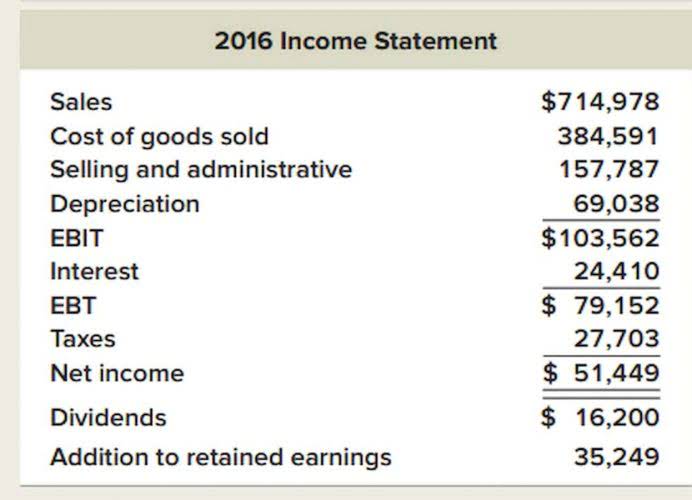Single-step VS Multi-step Income Statement

This format is preferable for larger or more complex businesses that require an in-depth analysis of their financial operations. The multi-step income statement is a detailed financial reporting format that separates operational and non-operational revenues and expenses, providing a comprehensive view of a company’s financial activities. This format distinguishes between the core business operations and other peripheral activities, allowing for a more nuanced analysis of financial performance. It is characterized by multiple steps that systematically calculate gross profit, operating income, and net income, offering insight into the efficiency and profitability of different business segments. Another advantage of the multi-step format is its ability to identify non-operating gains and losses, offering an itemized view of how non-primary business activities impact the overall financial performance.

The gross margin is then compared to the company’s past gross margins and other comparable entities’ gross margins to determine how efficiently the company is performing. As such, single-step statements are ideal for small companies just needing a basic overview of profitability each period. They lack deeper analysis but provide a straightforward snapshot of financial performance.
Want More Helpful Articles About Running a Business?
Income statements enable you to choose a monthly, quarterly, or yearly income statement period, depending on your needs. This simplified format groups all revenue sources together and all expenses together into two main categories. This includes non-core income like interest income or non-core expenses like interest expense. Taxes are incredibly complex, so we may not have been able to answer your question in the article. Get $30 off a tax consultation with a licensed CPA or EA, and we’ll be sure to provide you with a robust, bespoke answer to whatever tax problems you may have. From bookkeeping basics, we know revenue accounts have a normal credit balance, and expenses have a normal debit balance.
This can be useful, as it only takes into account the items that have to do with the company’s business activities, and excludes certain one-time costs and the performance of any investments the company holds. A multi-step income statement also focuses on revenue, expenses, and the profit or loss of a business. Still, it uses multiple equations to calculate the net income or yield of the company. If a multi step income statement correctly shows the components of Gross profit and separates Operating expenses from Non-operating expenses, accountants can use it to comply with generally accepted accounting principles (GAAP). In a true single-step income statement with no subtotals, line items for net revenues and costs and expenses are listed with a single total for Net income (loss). Businesses may include a subtotal for Total expenses in a single-step income statement.
Recap of Income Statement Formats
The primary purpose of the income statement is to provide stakeholders with a clear view of the company’s profitability and operational efficiency. It breaks down various sources of income and categories of expenses, helping to illustrate how the company generates its earnings and spends its resources. When it comes to preparing an income statement, companies have the option of using a multi-step income statement or a single-step income statement. The income statement comprehensively overviews a company’s operating income, expenses, and overall financial performance.

The multi-format’s main advantage lies in its ability to provide detailed informational purposes, offering a clearer picture of how direct costs impact the business’s bottom line. The siloed breakdowns in multiple-step income statements allow for deeper analysis of margins and provide more accurate representations of the costs of goods sold. Such specificity gives stakeholders a sharper view of how a company runs its business, by detailing how the gross, operating, and net margins compare.
The Difference Between Operating Profits & the Bottom Line
The content on this website is provided “as is;” no representations are made that the content is error-free. The new retained earnings balance is $225,000 ($160,500 beginning single step vs multi step income statement balance + $842,000 revenue – $430,500 expenses). Revenue, including non-operating income, is $842,000 ($834,000 net sales + $5,000 interest income + $3,000 other income).
- The multi-step format reveals more financial details at multiple levels – useful for identifying strengths vs weaknesses across different business activities.
- It enables users to identify the specific areas contributing to the profit or loss, thus facilitating a more informed analysis.
- When it comes to comparing a multi-step income statement vs a single-step statement, it is important to consider the type of business you operate.
- If a transaction is entered into an improper category, the mistake could affect how the income statement displays its results.
- The choice between these formats significantly impacts financial analysis and decision-making.
- For instance, interest expense is a non-operating cost since the item pertains to the financing activities of a company rather than any of its specific operating activities.
One crucial component of financial reporting is the income statement which summarizes the revenues and expenses incurred over a specific period. This article will delve into the intricacies of the multi-step income statement, its key components, preparation, and its significance in analyzing a company’s financial performance. Operating income provides insight into the profitability of the company’s core business activities, excluding the impact of non-operating items, financing costs, and tax expenses.
The multi-step income statement is ideal for larger companies or those with diversified operations, where it is important to differentiate between various income streams and expense categories. For example, a multinational corporation with multiple divisions, product lines, or revenue streams would benefit from the detailed breakdown provided by the multi-step format. The single-step income statement is particularly suited for small businesses, startups, or companies with straightforward or homogeneous revenue streams that do not require detailed reporting of different operational activities. A single-step income statement focuses on reporting the net income of the business using a single calculation. A multi-step income statement is more detailed and calculates the gross profit and operating income of the business using multiple calculations and an itemized breakdown.